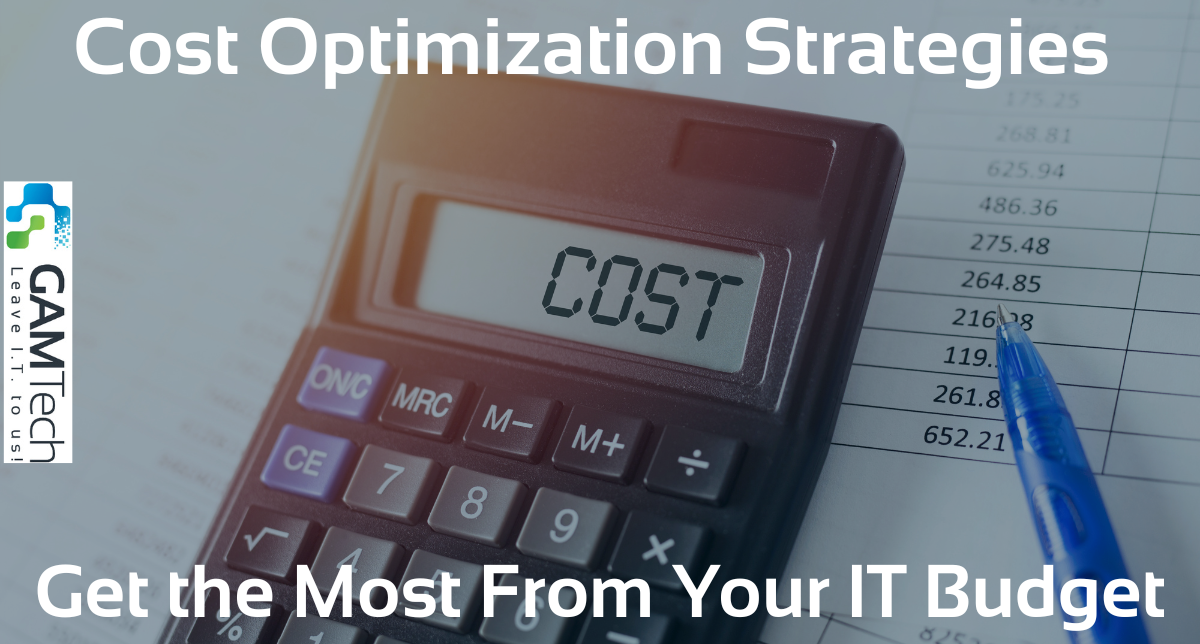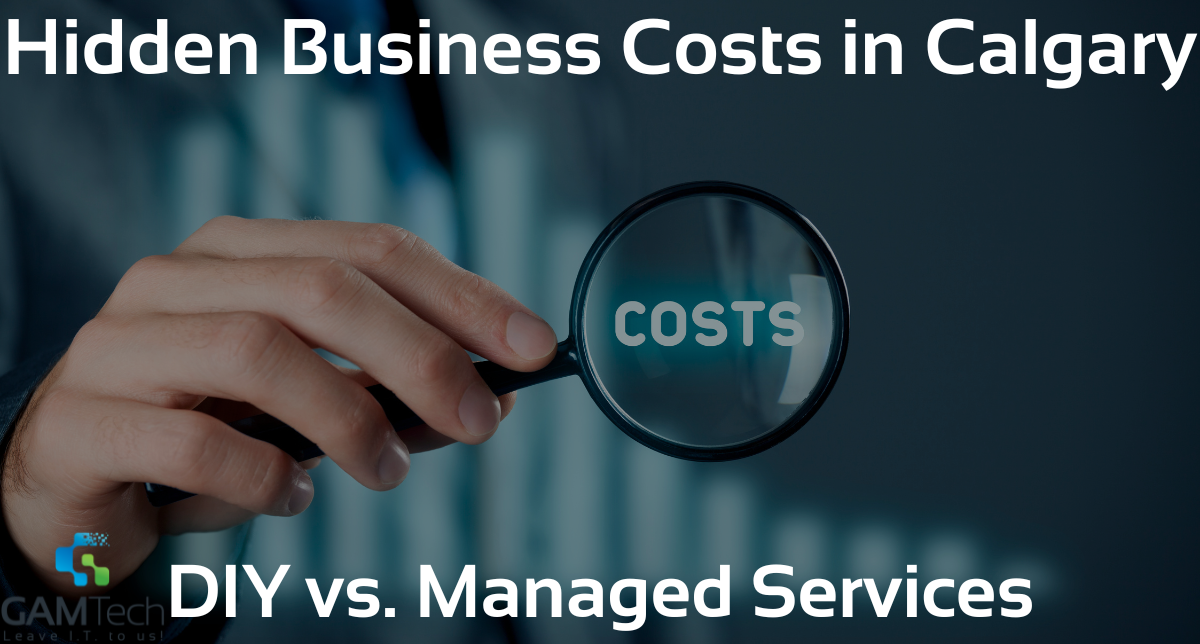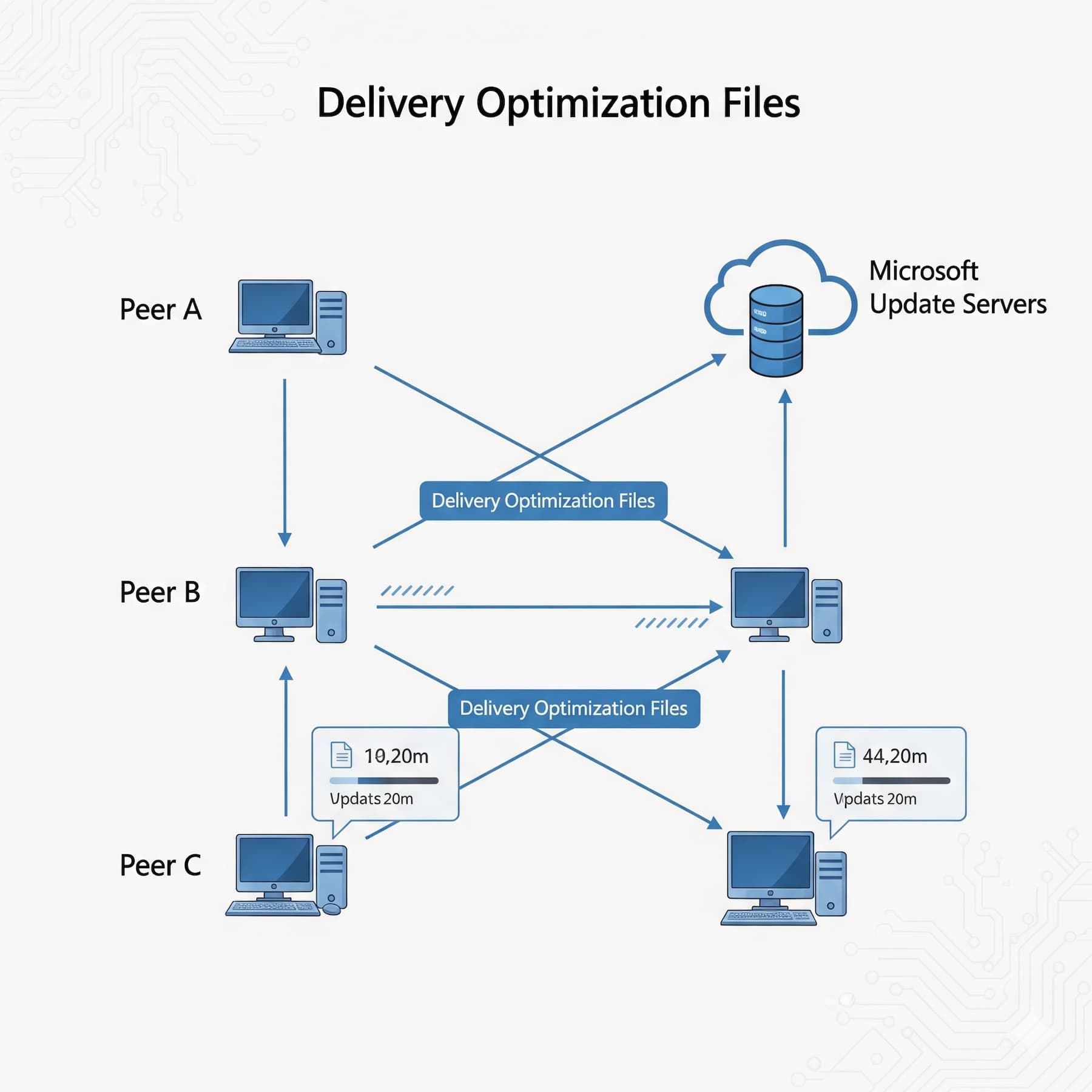Hidden Business Costs in Calgary: DIY vs. Managed Services
For Calgary businesses, effective management of IT infrastructure is not just a necessity but a strategic imperative. However, many small and...
5 min read
 Adrian Ghira
:
Apr 8, 2024 8:55:09 AM
Adrian Ghira
:
Apr 8, 2024 8:55:09 AM

IT spending has become one of the largest - and most complex - line items for businesses across nearly every industry. Between infrastructure, cybersecurity, cloud services, software licenses, and support, costs can scale quickly if left unchecked. But cutting costs at random isn’t the answer. Businesses need a smarter, more strategic approach to managing technology expenses without compromising performance or security.
That’s where IT cost optimization strategies come in. These approaches are designed to help organizations get the most out of their technology investments by identifying waste, improving efficiency, and aligning IT resources with actual business needs.
Whether you’re operating on a lean budget or simply looking to do more with what you already have, the right strategy can make a measurable impact on your bottom line.
IT cost optimization strategies refer to a set of practices aimed at reducing technology-related expenses while maximizing operational efficiency, performance, and long-term value. Rather than focusing on short-term cuts, these strategies prioritize sustainable savings by streamlining infrastructure, rightsizing services, improving vendor management, and automating repetitive processes.
These strategies apply to all areas of IT - hardware, software, cloud platforms, support services, and energy consumption.
Businesses that adopt cost optimization as an ongoing practice, rather than a one-time exercise, are better positioned to stay agile, competitive, and financially healthy in an increasingly digital business environment.
Understanding the average IT costs across various industries is crucial for businesses aiming to benchmark their expenditures and identify opportunities for optimization.
IT spending can vary significantly depending on the sector, reflecting each industry’s unique reliance on technology and regulatory requirements. Below is an overview of average IT spending as a percentage of revenue in key industries that commonly utilize managed IT services:
Financial institutions, including banks and insurance companies, typically allocate a substantial portion of their revenue to IT due to the critical need for robust security measures and compliance with stringent regulations.
Average IT Spending: Ranges from 4.4% at the 25th percentile to 11.4% at the 75th percentile of revenue.
Healthcare organizations invest heavily in IT to manage patient records securely, comply with health regulations, and support advanced medical technologies.
Average IT Spending: Approximately 4.3% of revenue.
Manufacturers focus IT spending on automation, supply chain management, and process optimization to enhance productivity and reduce costs.
Average IT Spending: Between 1.4% at the 25th percentile and 3.2% at the 75th percentile of revenue.
Retailers and eCommerce businesses invest in IT to support online platforms, manage inventory systems, and enhance customer experiences.
Average IT Spending: Approximately 7% of revenue.
Companies in this sector allocate IT budgets to optimize route planning, track shipments, and manage fleets efficiently.
Average IT Spending: Around 5% of revenue.
Businesses producing consumer goods invest in IT for product lifecycle management, market analysis, and distribution channels.
Average IT Spending: Approximately 3% of revenue.
Companies manufacturing industrial products focus IT investments on process control systems, quality assurance, and supply chain integration.
Average IT Spending: Around 2% of revenue.
Cloud computing offers scalability, flexibility, and cost-efficiency by shifting IT infrastructure to remote servers managed by third-party providers. By migrating workloads to the cloud, businesses can eliminate the need for costly on-premises hardware, reduce operational overheads, and pay only for the resources they consume. Additionally, cloud platforms offer built-in features for automation, scalability, and disaster recovery, further optimizing IT costs.
Software licensing costs can quickly escalate, especially in complex IT environments with numerous applications. Conducting regular audits to identify unused or underutilized software licenses allows businesses to optimize their software spending effectively. Consolidating licenses, negotiating volume discounts with vendors, and exploring open-source alternatives can help reduce licensing expenses without compromising functionality or compliance.
Virtualization technology enables businesses to maximize the utilization of their hardware resources by running multiple virtual machines on a single physical server. By consolidating servers, storage, and networking infrastructure through virtualization, organizations can reduce hardware acquisition costs, lower energy consumption, and simplify IT management. Virtualization also enhances scalability and agility, enabling businesses to adapt quickly to changing demand.
Bring Your Own Device (BYOD) policies empower employees to use their personal devices for work purposes, reducing the need for costly hardware procurement and maintenance. By embracing BYOD, businesses can achieve significant cost savings on device provisioning, support, and upgrades. However, it's essential to establish clear guidelines and security protocols to protect sensitive data and mitigate potential risks associated with personal devices accessing corporate networks.
Outsourcing non-core IT functions, such as helpdesk support, network management, or cybersecurity services, can be a strategic cost-saving measure. Managed service providers (MSPs) offer specialized expertise, scalability, and cost efficiencies that can help businesses optimize their IT spending. By outsourcing routine tasks to external providers, organizations can focus their resources on core business activities while benefiting from improved service quality and reduced operational overheads.
Data centers and IT infrastructure facilities consume substantial amounts of energy, contributing to high operational costs and environmental impact. Implementing energy-efficient practices, such as server consolidation, equipment optimization, and intelligent cooling solutions, can significantly reduce energy consumption and operational expenses. Additionally, exploring renewable energy sources and adopting green IT initiatives aligns with sustainability goals while further optimizing IT costs in the long run.
Consolidating hardware and infrastructure resources helps businesses optimize their IT spending by reducing duplication and maximizing utilization. Centralizing data storage, standardizing hardware platforms, and deploying converged infrastructure solutions can streamline operations, improve resource allocation, and minimize maintenance costs. Moreover, consolidating hardware assets simplifies IT management, enhances scalability, and facilitates future expansion without unnecessary overheads.
Effective Software Asset Management (SAM) practices enable businesses to optimize software licenses, minimize compliance risks, and control costs throughout the software lifecycle. By implementing SAM tools and processes, organizations can gain visibility into software usage, track license entitlements, and identify opportunities for license optimization and cost savings. SAM also helps mitigate legal and financial risks associated with non-compliance, ensuring that businesses maximize the value of their software investments.
Automation technology allows businesses to streamline routine IT tasks and processes, reducing manual intervention and operational overheads. By automating repetitive tasks such as software provisioning, patch management, and system monitoring, organizations can improve efficiency, minimize errors, and free up IT staff to focus on more strategic initiatives. Automation also accelerates time-to-market for new services and enhances overall agility, driving cost optimization and competitive advantage.
Cost optimization is an ongoing process that requires continuous monitoring, analysis, and optimization. By leveraging IT management tools, performance metrics, and cost-tracking mechanisms, businesses can identify opportunities for improvement, track resource utilization, and make informed decisions to optimize their IT spending. Continuous optimization enables organizations to adapt to evolving business needs, technological trends, and market dynamics while maximizing the value derived from their IT investments.
Implementing effective cost optimization strategies is essential for businesses seeking to maximize the value of their IT investments and achieve sustainable growth. By embracing cloud computing, rationalizing software licenses, implementing virtualization, adopting BYOD policies, outsourcing non-core functions, implementing energy-efficient practices, consolidating hardware and infrastructure, optimizing software asset management, automating routine tasks, and continuously monitoring and optimizing IT expenses, organizations can optimize their IT budgets while driving innovation, agility, and competitiveness in today's digital landscape.
Take control of your IT budget and unlock new possibilities for your business with GAM Tech's expertise and tailored solutions. Whether you're looking to migrate to the cloud, optimize software licensing, or streamline IT operations, our team is here to help. Contact us today to explore how our cost optimization strategies can drive efficiency, maximize value, and propel your business forward in the digital era.

For Calgary businesses, effective management of IT infrastructure is not just a necessity but a strategic imperative. However, many small and...

Data loss poses a significant threat to individuals and businesses alike, with various scenarios such as accidental deletion, hardware failure, or...

Have you heard about delivery optimization files? In the age of technology, most of us use computers on a daily basis for work, banking, paying...